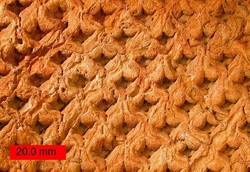Pseudoextinction

Descendants may or may not exist for extinct species. Daughter species that evolve from a parent species carry on most of the parent species' genetic information, and even though the parent species may become extinct, the daughter species lives on. In other cases, species have produced no new variants, or none that are able to survive the parent species' extinction. Extinction of a parent species where daughter species or subspecies are still alive is also called pseudoextinction.
Pseudoextinction is difficult to demonstrate unless one has a strong chain of evidence linking a living species to members of a pre-existing species. For example, it is sometimes claimed that the extinct Hyracotherium, which was an early horse that shares a common ancestor with the modern horse, is pseudoextinct, rather than extinct, because there are several extant species of Equus, including zebra and donkeys. However, as fossil species typically leave no genetic material behind, it is not possible to say whether Hyracotherium actually evolved into more modern horse species or simply evolved from a common ancestor with modern horses. Pseudoextinction is much easier to demonstrate for larger taxonomic groups.
Definition for extinction

A species becomes extinct when the last existing member of that species dies. Extinction therefore becomes a certainty when there are no surviving individuals that are able to reproduce and create a new generation. A species may become functionally extinct when only a handful of individuals survive, which are unable to reproduce due to poor health, age, sparse distribution over a large range, a lack of individuals of both sexes (in sexually reproducing species), or other reasons.
Pinpointing the extinction (or pseudoextinction) of a species requires a clear definition of that species. If it is to be declared extinct, the species in question must be uniquely identifiable from any ancestor or daughter species, or from other closely related species. Extinction of a species (or replacement by a daughter species) plays a key role in the punctuated equilibrium hypothesis of Stephen Jay Gould and Niles Eldredge.
In ecology, extinction is often used informally to refer to local extinction, in which a species ceases to exist in the chosen area of study, but still exists elsewhere. This phenomenon is also known as extirpation. Local extinctions may be followed by a replacement of the species taken from other locations; wolf reintroduction is an example of this. Species which are not extinct are termed extant. Those that are extant but threatened by extinction are referred to as threatened or endangered species.
An important aspect of extinction at the present time are human attempts to preserve critically endangered species, which is reflected by the creation of the conservation status "Extinct in the Wild" (EW). Species listed under this status by the International Union for Conservation of Nature (IUCN) are not known to have any living specimens in the wild, and are maintained only in zoos or other artificial environments. Some of these species are functionally extinct, as they are no longer part of their natural habitat and it is unlikely the species will ever be restored to the wild. When possible, modern zoological institutions attempt to maintain a viable population for species preservation and possible future reintroduction to the wild through use of carefully planned breeding programs.
The extinction of one species' wild population can have knock-on effects, causing further extinctions. These are also called "chains of extinction".[9] This is especially common with extinction of keystone species.
Extinction

In biology and ecology, extinction is the end of an organism or of a group of organisms (taxon), normally a species. The moment of extinction is generally considered to be the death of the last individual of the group (although the capacity to breed and recover may have been lost before this point). Because a species' potential range may be very large, determining this moment is difficult, and is usually done retrospectively. This difficulty leads to phenomena such as Lazarus taxa, where a species presumed extinct abruptly "re-appears" (typically in the fossil record) after a period of apparent absence.
Through evolution, new species arise through the process of speciation—where new varieties of organisms arise and thrive when they are able to find and exploit an ecological niche—and species become extinct when they are no longer able to survive in changing conditions or against superior competition. A typical species becomes extinct within 10 million years of its first appearance, although some species, called living fossils, survive virtually unchanged for hundreds of millions of years. Most extinctions occur naturally, without human intervention: it is estimated that 99.9% of all species that have ever existed are now extinct.
Mass extinctions are relatively rare events; however, isolated extinctions are quite common. Only recently have extinctions been recorded and scientists have become alarmed at the high rates of recent extinctions. Most species that become extinct are never scientifically documented. Some scientists estimate that up to half of presently existing species may become extinct by 2100



 RSS Feed
RSS Feed